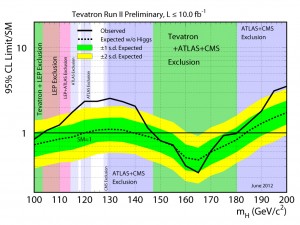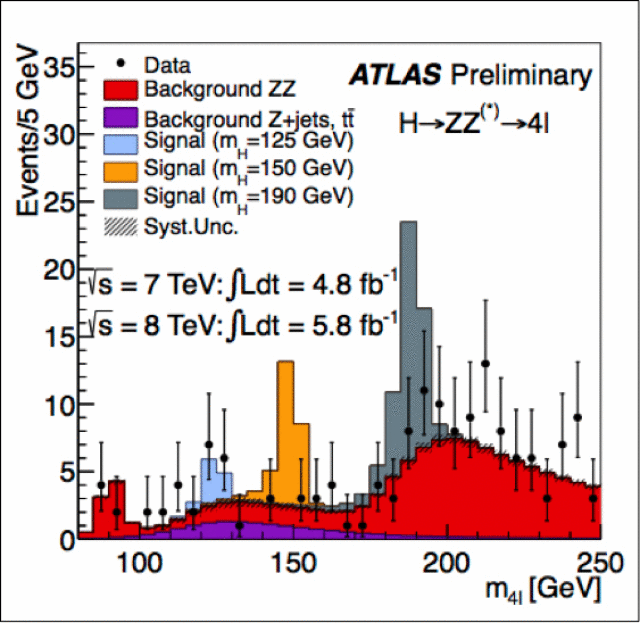It was a race to find the Higgs Boson – a scientific quest that has been years in the making.
July 2 2012: The Tevatron:
The scientists at the U.S. Department of Energy’s Tevatron collider revealed their latest results on July 2nd, two days before the highly anticipated announcement of the latest Higgs results from CERN and the Large Hadron Collider in Europe. The Tevatron scientists spent 10 years gathering and analyzing data from the CDF and DZero collaborations have and announced that they’d found their strongest indication to date for the much sought after, Higgs boson particle. The team collated the last bit of information out of 500 trillion collisions produced by the Tevatron since March 2001, yet the final analysis of the data did not categorically answer the question of whether the Higgs boson exists, but it stood on the scientific precipice with a fuzzy haze of a result lying in the misty fog of data.
“We achieved a critical step in the search for the Higgs boson,” said Dmitri Denisov, DZero cospokesperson and physicist at Fermilab. “While 5-sigma significance is required for a discovery, it seems unlikely that the Tevatron collisions mimicked a Higgs signal. Nobody expected the Tevatron to get this far when it was built in the 1980s.”
The Tevatron was the world’s second largest proton-antiproton collider. Residing at Fermilab, the Tevatron accelerated and stored beams of protons and antiprotons traveling in opposite directions around an underground ring four miles in circumference at almost the speed of light before colliding them at the centre of two detectors. However, due to funding costs in the US it was shut down on Sept. 29, 2011. And so all data was produced prior to that shut down.
The Tevatron data indicated that the Higgs boson, if exists, should possess a mass between 115 and 135 GeV/c2 ~ 130 times the mass of the proton.
July 4 2012: The LHC:
A few reports were leaked by CERN employees, anomalously of course, states that a discovery announcement was imminent. Then on the 4th July 2012 physicists announced that they have seen a clear signal of a Higgs boson — a key part of the mechanism that gives all particles their masses.
Two independent experiments reported their results, showing convincing evidence of a new boson particle weighing around 125 gGeV/c2, which so far is the best fit for the predictions of the Higgs previously made by theoretical physicists.
Direct at CERN, Rolf Heuer, was reported saying, “we have a discovery,” of a new subatomic particle, a boson, that is “consistent with a Higgs boson.”
The ATLAS experiment has seen a new type of boson decaying into four electrons – a good indicator that it is a Higgs particle.
Boson to be sure but is it the Higgs:
Clearly the result is a boson but the energy-mass level is different than initially predicted – so it’s possible it may be something more exotic – maybe even Dark Matter. In any case it is a huge break through and a great change in about to come to world of particle physics.

